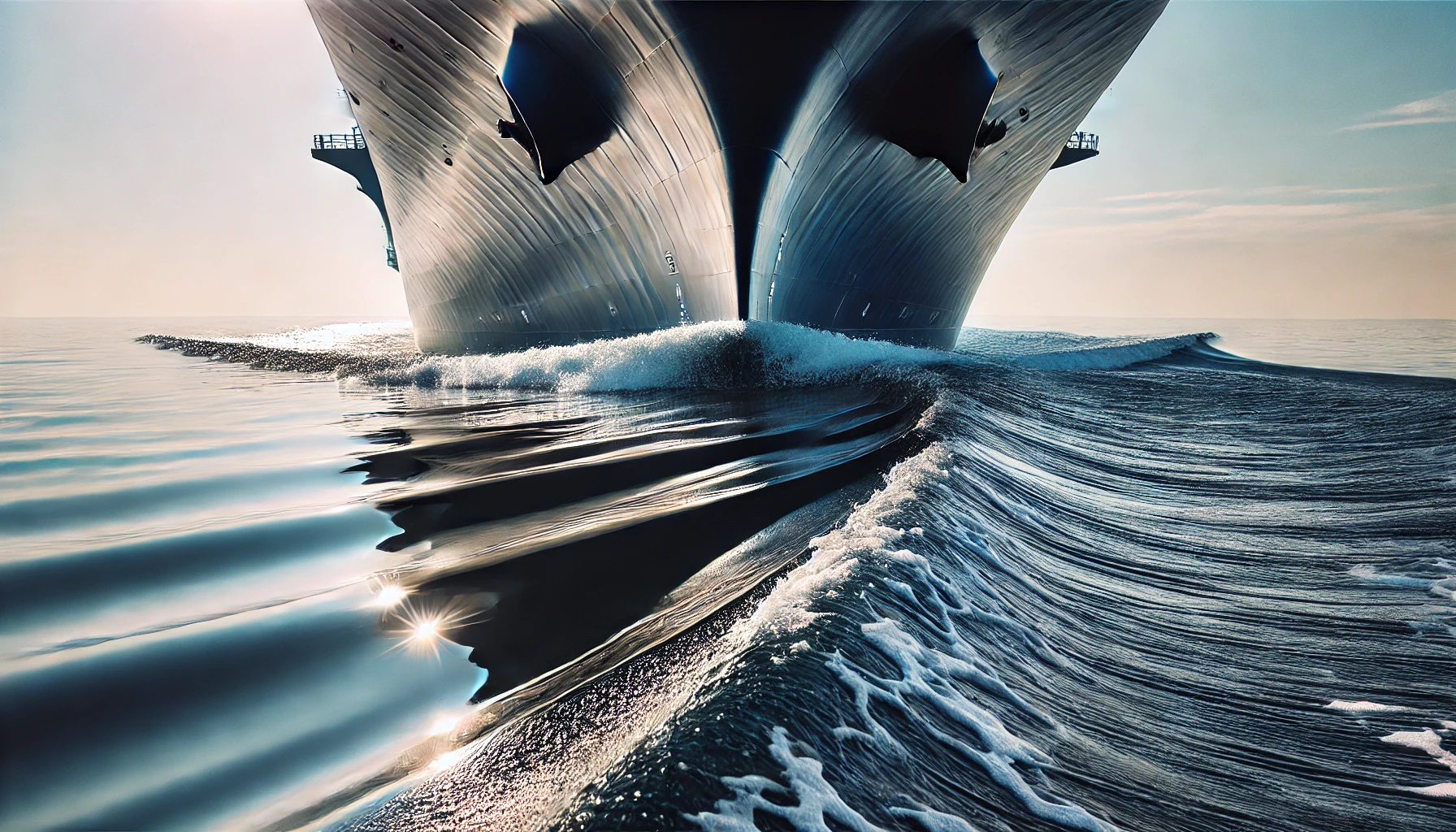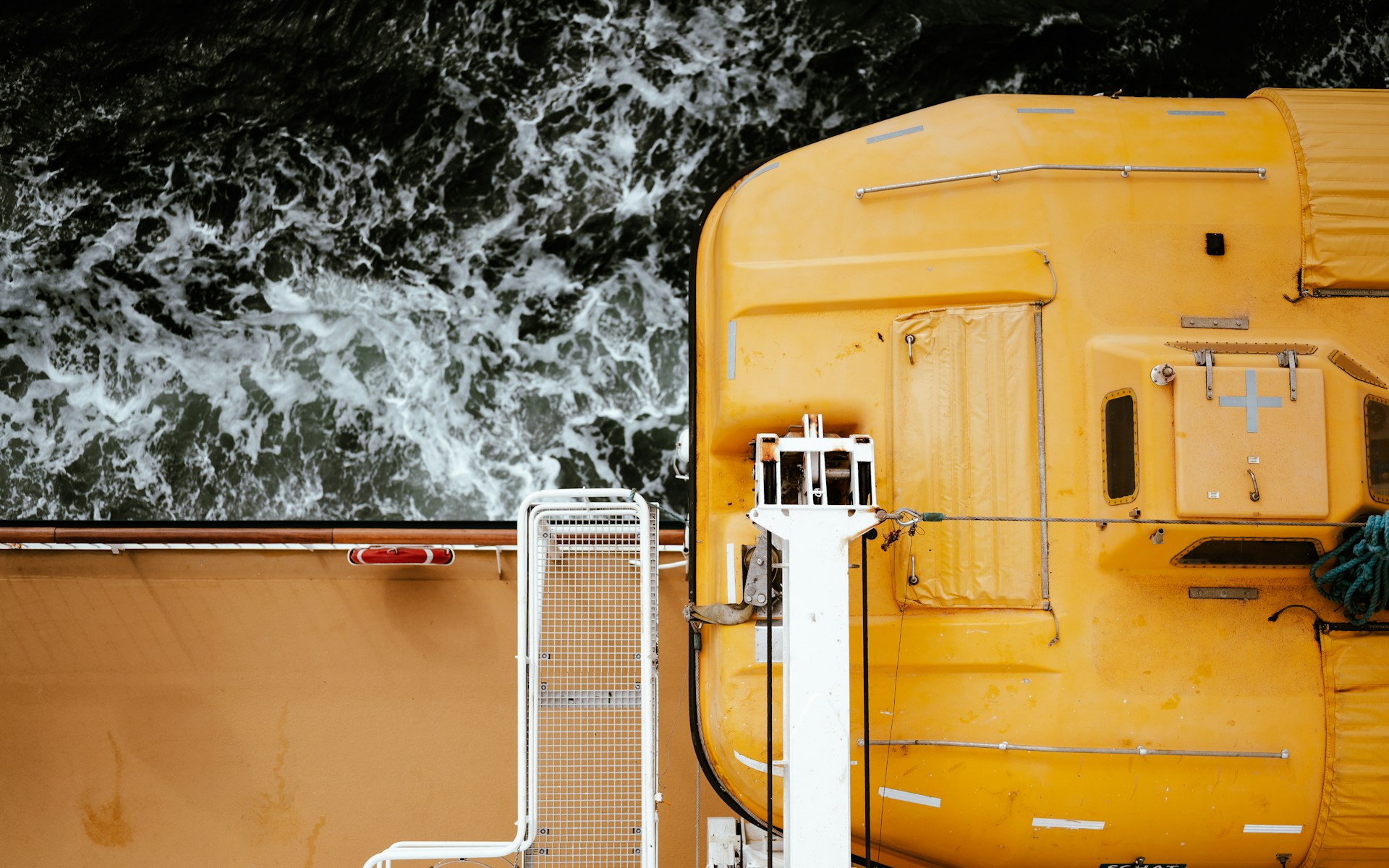Nautical Terms That Begin with the Letters J, K & L

Do you have more than a passing interest in all things related to the maritime industry? Are you looking for the definition of a certain nautical term, phrase or acronym? If that word begins with either J, K or L then you’re in luck!
In this series of shipping glossary blog posts we’ve been looking at the meanings behind the everyday such as anchor and buoy to maritime words that might not be quite so well known to anyone who is not in the shipping industry.
To check out some of our other maritime dictionary blog posts click the links below:
Nautical Terms That Begin with the Letter A
Nautical Terms That Begin with the Letters E & F
Let’s get on with it!
From jackup to lookout: Maritime words beginning with J, K & L
Jackup
A jackup is a deck or platform on a rig that has legs that can be jacked up or down. When operations are taking place, the legs rest on the seabed. When the rig is to be moved, the legs are retracted, enabling it to float into position.
Junior Electrician
The work of a Junior Electrician on a ship involves assisting the rest of the electrical department with tasks such as reading and understanding technical diagrams and blueprints, installing and replacing wiring and electrical components, and maintaining, repairing and upgrading faulty electrics.
Read more: Nautical Terms That Begin with the Letter B
Keel
The keel is the backbone of the majority of ships and boats. It runs longitudinally along the bottom of the boat, in the center of the hull from stem to stern.

Depending on the vessel it will be made of metal or timber or another robust and rigid material. It gives a boat greater control and stability when moving forward.
Knot
A knot is a unit of speed used in marine navigation. It is defined as one nautical mile per hour. A nautical mile is a little over a standard mile. One nautical mile = 1.15 miles = 1.85 kilometers. One knot = 1.15 miles per hour = 1.85 kilometers per hour.
LNG
LNG stands for Liquefied Natural Gas. It is natural gas that has been cooled until it is in liquid form. This makes it easier and safer to store or transport it.
LNG Carrier
An LNG carrier is a vessel that carries Liquefied Natural Gas (LNG). Their cargo tanks are heavily insulated and made of special aluminum alloy which enables them to carry LNG at a temperature of -2,850F / -1601C.
Read more: Nautical Terms That Begin with the Letter C
LOA
LOA stands for length overall. It is the total length of a vessel from the bow to the stern, measured parallel to the waterline. This is important information to have while docking the ship!
LPG
LPG stands for Liquefied Petroleum Gas. It is a fuel that is made from petrol and contains a flammable mixture of hydrocarbon gasses, most normally propane, butane, and propylene.
LPG Carrier
An LPG carrier is a vessel that has been designed to transport Liquefied Petroleum Gas.
Lading
Lading is the act of loading cargo onto a vessel.

Read more: Nautical Terms That Begin with the Letter D
Laid-Up
If a vessel is laid-up, it is not actively in service. The ship will be out of commission for a number of reasons varying from needing work done to ensure seaworthiness, waiting for classification, being refurbished, or even waiting for work in a market slump.
Lake Freighter
Also known as lakers, a lake freighter is a ship that plies its trade in the North American Great Lakes. They are usually bulk carriers and transport ore and grains.
Launch Service
A launch service is a company that runs a water-taxi service to ships at anchor from vessel to port.
Length Overall
Length overall (LOA) is the total length of a vessel from the bow to the stern, measured parallel to the waterline. This is important information to have while docking the ship!
Less Than Container Load
Less than Container Load (LCL) is used to refer to a shipping container which is filled by multiple orders to make up one full container.
Read more: Nautical Terms That Begin with the Letters N & O
Lifeboat
A lifeboat is a specially designed and constructed boat that is used in rescue operations. Lifeboats are often double ended and can cope with rough seas and brutal weather conditions.
Lifeboat Drill
All ships conduct a lifeboat drill, also known as muster drills - an onboard exercise to ensure that all crew (as well as any passengers) know how to evacuate the vessel in the event of an emergency.
International law stipulates that the Master of every ship must make sure that officers, crew and passengers are familiar with the procedure of lowering the lifeboats and evacuating the vessel, and the emergency use of the lifeboats.

Lift On / Lift Off Vessel
A Lift On / Lift Off vessel, Lo-Lo vessel, or Lift On / Load Off ship is a container ship which, instead of using the port’s container crane (otherwise known as the ship-to-shore crane or container handling gantry crane) uses their own crane.
This enables them to undertake cargo operations without assistance from the port.
Read more: Nautical Terms That Begin with the Letter P
Light Displacement Tonnage
Light Displacement Tonnage is the sum weight of a vessel’s hull, equipment, machinery, and spares. If a ship is purchased to be scrapped, this is usually the grounds on which a price is determined.
Lighter
Lighter is a general name given to broad boats with flat bottoms which are used to transport cargo between a vessel and the shore. Lighters usually undertake short haul journeys, usually to assist in loading and unloading operations.
Read more: Nautical Terms That Begin with the Letters X, Y and Z
Lighter Aboard Ship
A Lighter Aboard Ship (LASH) is a vessel which transports barges (known as lighters). Lighters are mostly unpowered barges and they need to be transported between inland waterways that are separated by sea.
Because the lighter cannot relocate under its own steam (it is normally pushed or towed when in harbor or on a river or canal) it needs to be carried by a larger vessel.
Read more: Nautical Terms That Begin with the Letters Q & R
Lighterage
Lighterage is the fee charged for transporting cargo by a lighter or a barge.
Lightship
A lightship or light ship - also called a Lightvessel or Light Vessel - is a ship fitted out with a beacon on a mast that functions in the same way as a lighthouse: To act as a warning and to help other boats and vessels at night or in overcast and unfavorable conditions safely navigate their passage.

Lightships are commonly used in waters that are too deep for a lighthouse to be constructed.
Liner
A Liner is not just a passenger ship - it can also be a ship that transports cargo. The term Liner is given to a vessel which operates regular routes between advertised and scheduled ports.
Read more: Nautical Terms that Begin with the Letters U, V and W
List
List is the word used to describe it when a vessel is almost permanently leaning to one side due to an incorrect distribution of weight onboard i.e. the vessel is listing.
LoLo Vessel
A LoLo vessel, Lift On / Lift Off vessel, Lo-Lo vessel, or Lift On / Load Off ship is a container ship which, instead of using the port’s container crane (otherwise known as the ship-to-shore crane or container handling gantry crane) uses their own crane.
This enables them to undertake cargo operations without assistance from the port.
Load Line
Also called the Plimsoll Line, the Load Line is a physical marking on a ship's hull which indicates the maximum depth to which that vessel can sink when loaded with cargo.
Loaded Leg
The loaded leg is the portion of a vessel's voyage in which the ship is carrying cargo.
Log
Log can mean three things in Maritime Terms:
1) it is an instrument that is used to measure the speed and distance a boat has traveled,
2) the act of recording the details of a vessel’s voyage in a book like a journal or diary entry and
3) the actual book itself - i.e. the Captain’s Log.
Read more: Nautical Terms That Begin with the Letter S
Loll
Loll, or angle of loll, is the state of a ship being unstable when it is upright meaning it will be heeling even to port (left) or starboard (right.) This can be caused by anything from the vessel being top heavy to an excess of water flooding below deck.

Longshoreman
A Longshoreman is also called a Dock Worker or a Stevedore. Longshoremen are land-based and load and unload cargo from vessels in ports. They also undertake administrative tasks relevant to this work.
Lookout
A Lookout is a crew member whose duty and responsibility it is to keep watch for approaching vessels or dangerous objects.
Read more: Nautical Terms That Begin with the Letter T
On a sailing yacht they may be stationed in the crow’s nest, located at the top of one of the main masts. On a merchant ship, ferry or liner (for example) the Lookout will be on the bridge or forecastle.
Want to see all of our nautical dictionaries from A through to Z? Check out our Shipping Glossary! Meanwhile, why not follow us on Facebook, LinkedIn and Twitter / X too?
Read the previous blog post in this series: Nautical Terms That Begin with the Letters G, H & I
Read the next blog post in this series: Nautical Terms That Begin with the Letter M

Eve Church
Eve is Martide's content writer, publishing regular posts on everything from our maritime recruitment and crew planning software to life at sea. Eve has been writing professionally for more than two decades, crafting everything from SEO-focused blog posts and website landing pages to magazine articles and corporate whitepapers.
UK

is the only site for maritime jobs



